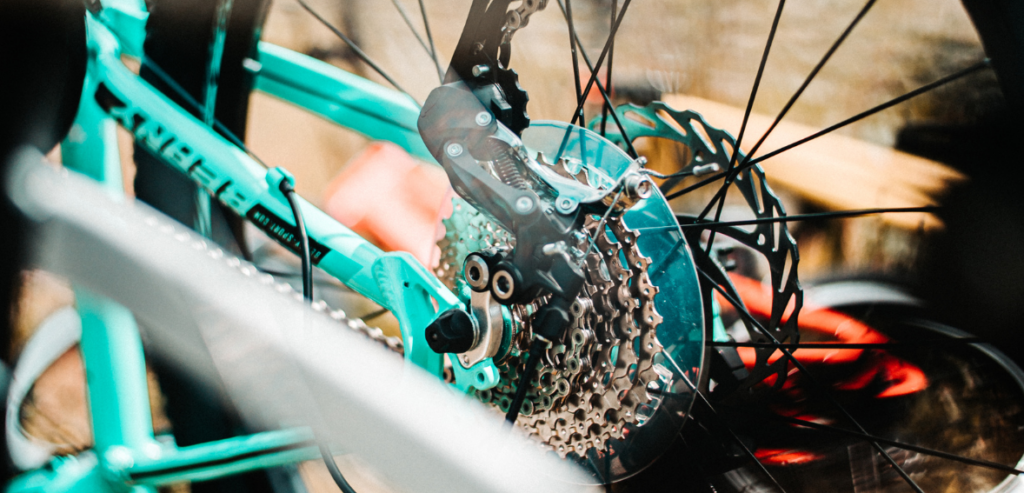Finding the right tire pressure for your road cycle will not only make your ride more comfortable, but it will also increase efficiency and reduce the risk of punctures. Nonetheless, your weight, riding climate, tire type, and frame size all affect the ideal tire pressure, which differs personally. Let’s explore how to select the correct tire pressure for your road bike so that riding will go more smoothly.
Regarding tire pressure, it’s all about striking a harmony. Should the pressure be excessive, the tire gets somewhat rigid. On level roads, this lowers rolling resistance; yet, on prolonged rides, any little hill gets transmitted to your arms and lower back, which can be taxing. If the pressure is too low, on the other hand, it could feel more pleasant, but the tire is more likely to distort, therefore increasing rolling resistance and puncture risk. Finding the correct balance is therefore quite vital.

Generally speaking, lighter cyclists can use somewhat lower tire pressure; bigger riders are advised to typically need more pressure. Riders falling between 60 and 90 kg usually begin with an 80 to 100 PSI (pound per square inch) pressure. Your personal experience will help you to make little tweaks. If your arms or lower back hurt following a ride, for example, the pressure may be excessive. On the other hand, should the ride seem slow, you could have to apply some pressure.
Naturally, the breadth of the tire influences your pressure selection as well. Generally speaking, a 25 mm wide tire needs less pressure than a 23 mm tire to improve the contact patch, therefore improving comfort and grip. Usually requiring lower pressure to minimize vibrations, wider tires—such as 28 mm or even 32 mm—are more suited for long-distance rides or tougher routes. Changing the pressure to between 70 and 90 PSI will help you to ride more smoothly and steadily if you are utilizing wider tires.
Apart from weight and tire width, the riding surroundings influence your pressure choice. Should your path mostly consist of smooth asphalt, you can gently raise the pressure to lower rolling friction. On the other hand, if you ride on gravel or uneven ground frequently, you should reduce the pressure to manage those shocks and guarantee better grip and comfort in challenging environments.

Regarding frame size, your riding experience will be much influenced by the frame you choose. Professional size charts, including the standard road bike size chart, can help you find the appropriate frame height and length for yourself if you are not sure about the proper frame size. Likewise, there are mountain bike size charts that will enable you to choose a bike and modify your riding position with better knowledge. A good frame size together with the right tire pressure will simplify your ride and help you to better use your energy.
To improve comfort and economy even more, some bikers choose to use varying pressures for the front and rear tires. Usually, the rear tire pressure is somewhat greater since it bears more weight; the front tire pressure is lower to give better traction while turning and absorb more shock while running across obstacles. Especially on lengthy rides or in difficult conditions, this front-lower, rear-higher pressure system can help you achieve a balanced performance on many road surfaces, therefore enhancing the experience.
Remember too that tire pressure is influenced by the weather. Variations in temperature affect pressure. Higher pressure results from hotter weather; hence, before riding in hot conditions, you might have to somewhat lower the pressure to prevent over-inflation and the possibility of a puncture. Likewise, the pressure may drop in cold conditions whilst riding, hence you will have to add a small amount of extra air before leaving.
Finding the ideal tire pressure for your riding experience calls for changes and fine-tuning rather than a one-time effort. Before every ride, you should spend a few minutes verifying that your tire pressure falls within a reasonable range. Start with a suggested value and progressively change it depending on your experience to discover what works best for you if you still find uncertainty about the pressure.
Selecting the correct tire pressure will help you greatly increase comfort and safety in addition to riding performance. This page should assist you better in knowing how to adjust the tire pressure on your road bike. To keep your tires in the best shape, remember to routinely check their pressure. Riding is a lifestyle as much as a sport; hence, choose the correct arrangement and savor the freedom it offers!
Tire Pressure Measurement Confusion

The confusion between metric and imperial measurements often complicates tasks as straightforward as managing bike tire pressure. Cyclists frequently encounter tire pressure readings in psi (pounds per square inch, imperial) or bar (a metric unit), leading to potential miscalculations when inflating tires. For instance, a tire rated for 3 bar may be mistakenly inflated to 3 psi—far too low for safe riding—while conversely, interpreting psi as bar could lead to dangerously overinflated tires. This mix-up, especially for those unfamiliar with conversions, can affect riding performance and increase the risk of tire blowouts or premature wear.
Moreover, many pumps and pressure gauges include dual readings but lack clear guidance on which units to prioritize, further exacerbating the problem. Riders may struggle to convert between the two systems, particularly when tools or instructions are inconsistent. This confusion underscores the importance of understanding unit conversions and ensuring accurate tools are at hand to avoid compromising safety and efficiency. For cyclists, paying attention to these details can make the difference between a smooth ride and a costly mistake.
